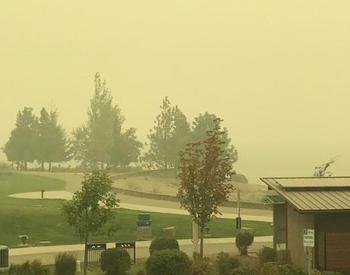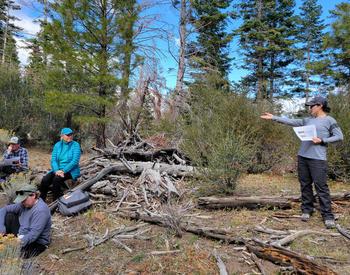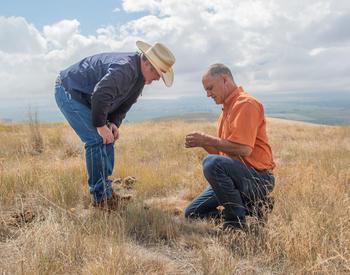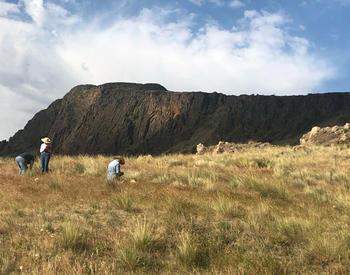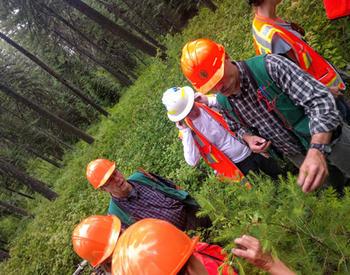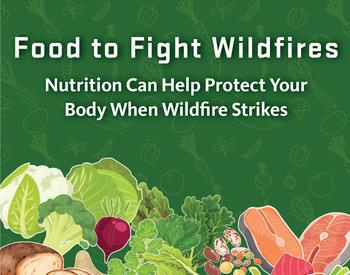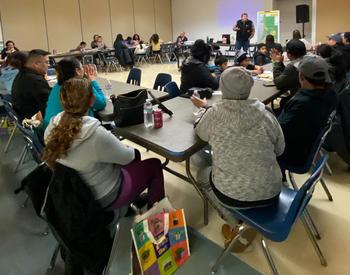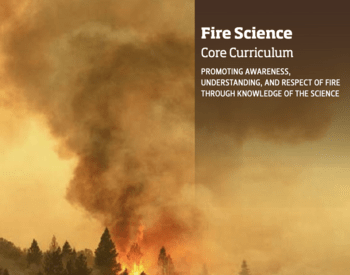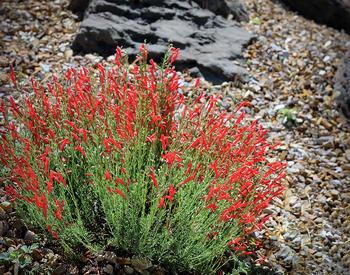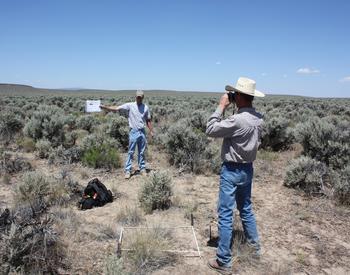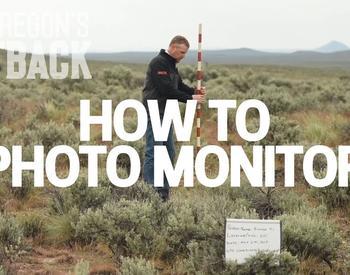Rangeland wildfires are getting larger and more frequent. Southeast Oregon’s 2012 Long Draw Fire (550,000 acres) and the 2014 Buzzard Complex Fire (400,000 acres) are among the largest in state history. Large-scale disturbances like these threaten the sagebrush ecosystem and the communities that depend on healthy, productive rangelands.
What rangeland managers do before a wildfire can matter a lot for what happens during and after. That is, whether and how a site recovers after it burns, and how likely it is to burn again in a future wildfire. Rangeland managers can use resilience and resistance concepts described below to make management decisions that will reduce wildfire risk and limit some negative impacts of fire.
Fire and resilience & resistance concepts
Fire management can be informed by concepts of rangeland resilience and resistance, which refer to how an area is expected to respond to disturbances such as wildfire or invasion by annual grasses. By implementing practices that can modify fire behavior and fire severity, rangeland managers may limit some negative impacts and promote plant community recovery following fire.
When rangeland fires kill perennial grasses and leave bare soil, invasive annual grasses—primarily cheatgrass and medusahead—move in and capitalize on newly available nutrients. These annual grasses are perfect tinder for wildfires; they die early in the growing season and, if left untreated, form a thick, continuous layer of combustible material (Figure 1). That flammable mat increases the probability that a fire will start and quickly spread.
That continuous fuel layer spreads fire to heavier, more volatile fuels such as sagebrush and western juniper. When that happens, fire lingers, scorching the ground at high temperatures and increasing perennial bunchgrass mortality and future potential for annual grass dominance.
No one can control weather conditions, elevation, temperature and precipitation. But by understanding a site’s resilience to fire and potential vulnerability to invasion by annual grasses, rangeland managers can strategically modify the distribution and arrangement of vegetation to (1) reduce the likelihood of a fast-spreading wildfire, and (2) minimize the possibility of plant community transition to annual grass dominance.
Influencing wildfire at the landscape-scale
Fuels management aims to influence the potential for fire starts, spread, and fire severity by modifying the amount and arrangement of flammable material. Rangeland fuel treatments include grazing, herbicide application, mechanical thinning, and prescribed fire. Grazing reduces fuel loads and disrupts fuel continuity. This can mean decreased ignition and initial spread of fires. Properly managed grazing can also reduce fuels on the crown of bunchgrasses, which may reduce fire-induced mortality.
When selecting a treatment, rangeland managers must consider the site’s resilience to fire and resistance to invasion. For example, hazardous fuel reductions such as sagebrush thinning could moderate fire severity, decrease risk of fire-induced mortality in perennial grasses, and provide safe access for wildland fire responders. But if the site has low resistance to invasion, the treatment may simply create an opening for annual grasses to colonize.
Working together to improve fire outcomes
Wildfire operates at the landscape-scale, not the parcel- or ranch-scale. Landowners and managers must think about how their rangeland management activities and fuel treatments can collectively influence fire behavior and outcomes at scales beyond their individual parcel. This requires comprehensive planning, coordination and management. Considerations for doing this work together:
- Work at a meaningful scale. An effective approach considers landscape-scale effects of treatments, so a meaningful scale will likely need to include multiple landowners and managers. Planning for too big of an area may involve too many different people and interests and may be challenging to coordinate, so start with existing social relationships and networks for doing work together.
- Develop (or adapt) a planning and coordination framework. It’s unreasonable (and expensive) to treat all fuels everywhere. A planning framework can aid partners in determining where fuel treatments would be most effective for reducing hazards and maintaining or improving rangeland resilience and resistance (Figure 2). This might include using tools that map vegetation or probability of large-scale wildfire to make decisions about strategic treatments to influence the occurrence and outcomes of wildfire in the area (see, for example, the Rangeland Analysis Platform’s Great Basin fire probability tool).
- Leverage existing interests and motivations. Despite differences among neighbors, organizations or agencies, the goal of resilience to fire creates a common purpose, even when individuals’ values diverge. Use this shared interest to creatively mix and match different entities’ abilities and resources to implement activities on different landownerships.
To reduce frequent, large rangeland wildfires, rangeland management should be fire management; management decisions must seek to reduce the likelihood that a wildfire occurs and improve outcomes when one does. This involves managing for resilience and resistance and coordinating activities at scales that matter.
A version of this article was previously published in the July/August 2022 issue of Oregon Cattlemen's Magazine (pp. 38-42).
References
Davies, K.W., Nafus, A.M., 2013. Exotic annual grass invasion alters fuel amounts, continuity and moisture content. International Journal of Wildland Fire 22:353–358.
Davies, K.W., Svejcar, T.J., Bates, J.D., 2009. Interaction of historical and nonhistorical disturbances maintains native plant communities. Ecological Applications 19:1536-1545.
Davies, K.W., Gearhart, A., Boyd, C.S., Bates, J.D., 2017. Fall and spring grazing influence fire ignitability and initial spread in shrub steppe communities. International Journal of Wildland Fire 26:485-490.
Hulet, A., Boyd, C.S., Davies, K.W., Svejcar, T.J., 2015. Prefire (preemptive) management to decrease fire-induced bunchgrass mortality and reduce reliance on postfire seeding. Rangeland Ecology and Management 68:437-444.
Mahood, A.L., Balch, J.K., 2019. Repeated fires reduce plant diversity in low-elevation Wyoming big sagebrush ecosystems (1984-2014). Ecosphere 10:e02591.

